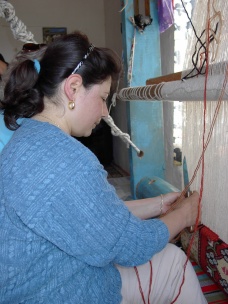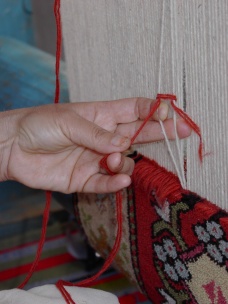The history of Anatolia, the Turkish homeland, is simply incredible. The world's oldest 'city' was discovered here at Catal Hoyuk in 7500BC. The Hittite Empire, little known in the west, rivalled that of ancient Egypt, and left behind captivating works of art.
The heartlant of classical Hellenic culture is actually in Turkey, including cities such as Troy, Pergamum, Ephesus, Miletus and Halicarnassus. Most modern Turkist cities have a Roman past and all have Byzantine connections too.
In the mind of most Western visitors the mention of Turkey conjures up vague stereotypical visions of oriental splendor and decandence, of mystery and intrigue,sultans and harems, luxury and wickedness! These outdated ideas quickly evaporate once the visitor arrives in Turkey. The Turkish Republic is democratic, rapidly modernising, secular and western-oriented with a vigourous economy.
 The Turks are most friendly to foreign visitors, the cuisine is often excellent, the cities are dotted with majestic old buildings and the countryside resembles a national park in many locations. Turkey is a big country, and the variety of things to do and see is immense - water sports and mountain trekking, archaeology and night clubs galore, river rafting and raki sessions.....Turkey can keep you happy for weeks or even months.
The Turks are most friendly to foreign visitors, the cuisine is often excellent, the cities are dotted with majestic old buildings and the countryside resembles a national park in many locations. Turkey is a big country, and the variety of things to do and see is immense - water sports and mountain trekking, archaeology and night clubs galore, river rafting and raki sessions.....Turkey can keep you happy for weeks or even months.
CARPETS
When you see rugs with a pile it is a carpet which has been made with a series of knots on the warp; a kilim is a woven material with a warp and a weft. There are two types of knots - a single knot typifies a Persian carpet whereas Turkish carpets are made with a double knot and are thus more durable. The best quality carpets are those which are made with hand spun wool and natural dyes.
Designs found in rugs and carpets are unique to each carpet producing area within Turkey and it is the colour and design of a particular carpet which will appeal to you, whether it is a medallion design from Uşak or Kayseri or a intricate floral design from Hereke, the typical prayer mat design of Milas or the geometric designs of Konya. All carpets reflect the traditional skills of the Turkish artisans learnt through the centuries, and a small piece of Turkish artistry for you to enjoy forever.
Hereke
The most famous and finest silk carpets are produced in the small town of HEREKE, 60 km east of Istanbul. The first looms were installed there upon the orders of the Sultan, in order to produce carpets for the palace, the nobility and other important people. Naturalistic floral decoration is typical of the pure silk Hereke carpets.Plum blossoms, tulips, carnations, roses and other flowers create an atmosphere of spring. They are made in various sizes and an increase in demand has forced the production of these special carpets in places other than Hereke.
Kars
Different colors, especially pastels, are the characteristics of these high pile carpets which have a much looser knot than carpets from other regions.
 Kayseri
Kayseri
The town of Kayseri, the capital of Cappadoccia situated in central Anatolia, is one of the most famous carpet manufacturing centers of Turkey. Kayseri is the only centre where carpets of all sizes are made. Fine knotting and close pile make every detail of the design clearly visible.
Kayseri and Hereke are world centers for the best quality natural silk carpets. These are made with natural silk produced in Bursa, and are very bright in color and extremely decorative.
Milas
The Milas carpet with its varied colors and compositions has an important place in West Anatolian carpet production. Milas carpets are made in pale delicate tones produced with vegetable dyes. The dominant colors are yellow, the color of tobacco, dark and light brown and reddish blue.
Yağcibedir
The pure wool of Yağçi Bedir produced in the mountain villages of the Aegean region are some of the best quality of their kind. The dominant colors of these very soft carpets are blue and red. The deep blue of the Aegean gives the basic color. They are patterned with geometric forms, stylised birds and numerous stars of Solomon, and framed in a border of five or seven bands.
Yahyalı
Pure wook and vegetable dyes are used. Adorned with stylised floral patterns and geometric designs, these carpets are world famous. Produced in villages, they reflect local color and the use of high quality materials. Dominant colors are navy blue, red and brown.
KILIMS
The word kilim simply means a flatwoven rug, or rug without a knotted pile. Until recently the kilim in general has been considered the poor relation of the Oriental knotted carpet, but there has been a recent explosion of interest in this native art which probably developed from the nomadic nature of the people of Anatolia.
Thrace
The Tree of Life composition is most common in kilims from this region of North West Turkey. A floral border with animal and leaf motifs is typical, and red and blue colors predominate.
Bergama and Balikesir
Antique and old kilims from western Anatolia are recognised by the interlocking patterned grid of blue on a red ground. Modern Balikesir rugs are varied in design, often featuring a plain ground decorated with medallions.
Manastir
Very simple compositions with little patterning make these kilims easy to distinguish from the usual highly patterned Anatolian varieties. The colour of the background is usually tomato red or black.
Aydin
Small scale busy patterns in bright colours which are often woven in two halves and joined together.
Mut
The kilims of Mut are often found with dark warps of goat hair or sheep's wool. Mirror images of brightly coloured medallions with a contrasting crenellated band of dark wool, are set against a red background.
Konya
Kilims from this area are often from villages surrounding the main city. Made entirely of wool, using slitweave techniques, these large kilims are made up from two or even three pieces sewn together, with a white or cream background and a series of medallions down the centre. Konya is also a centre for modern production of good quality.
Obruk
These kılııms have large repetıtive designs. Cruciform and small medallion patterns make up two or three borders. The mihrab on prayer kilims is well proportioned and pointed. Rugs are woven in bright light colours - blues, greens and reds. Obruk also produces the decorative cicims.
Kayseri
Loosely woven in slitweave with contour bands reinforcing the structure, these kilims from Central Anatolia are usually red and black in color, fading to softer pinky browns and greys.
Malatya
These kilims are woven by the Kurds and Turks of the Kurdish districts in two matched halves. The intricate patterned rugs have central medallions with contrasting cotton areas. Band kilims from Malatya are woven in separate halves, each one complete in itself. These are then joined and the resulting rugs are some of the longest to be found anywhere. They are dark red and blue in color with striking bands of white patterning.
Sivas/Malatya
These are very finely woven easily recognised by compartmentalised patterns within patterns. Woven in slotweave technique, loosely outşined with weft wrapping, they are rich and varied in color and design.
Sivas
Invariably prayer rugs these kilims are woven in soft muted colors with a strong mihrab design, and borders full of highly decorative flower designs.
Karabağlı
To the east of Erzurum, these kilims are floral with strident color.
Erzurum
Prayer kilims with distinctive floral designsf of lifelike carnations and leaves. Very often their date of composition is woven into the design. Yellow and ochre in color.
Kars
Typical of most Kurdish work, these kilims are usually prayer rugs, or composed of long strips sewn together. They have dark woollen warps and strong, dark patterns.
Van
Woven in two strips, kilims from around Lake Van are well made from good, hard-wearing wool. They resemble kilims woven by other Kurdish groups in the Caucasus and north-west Persia, being finely patterned with dark background colour.
